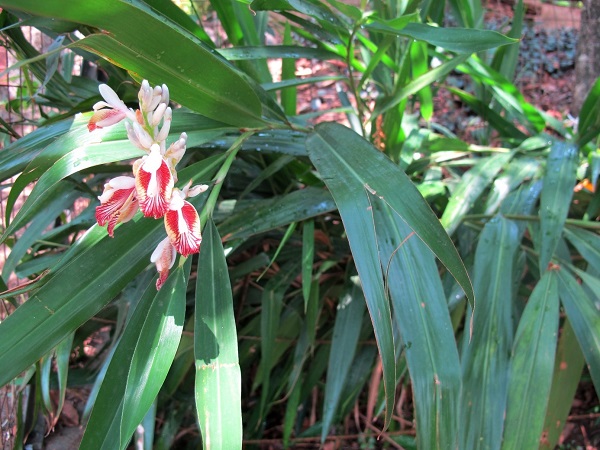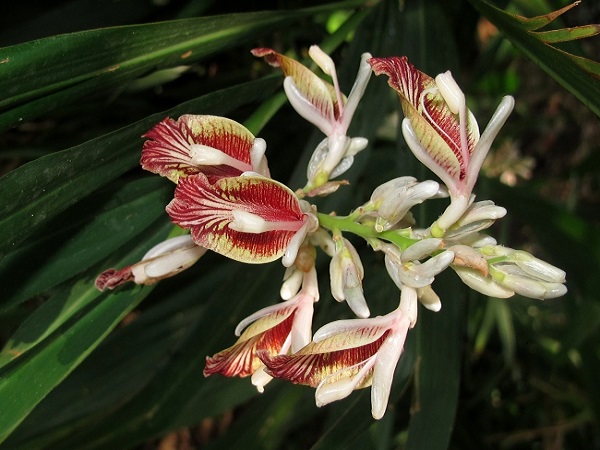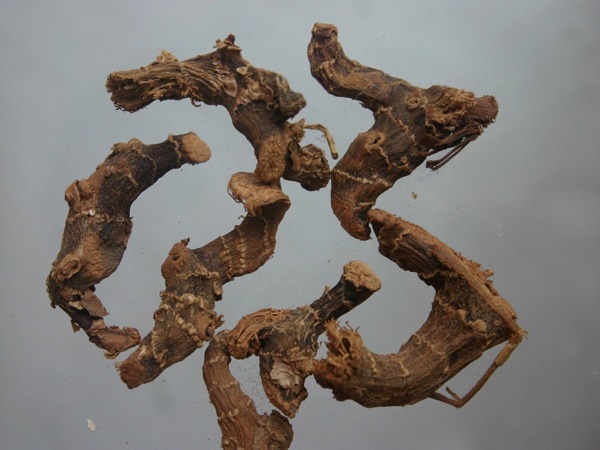
| Family | Zingiberaceae |
| English Name | Lesser Galangal, Snap Ginger |
| Malayalam Name | Chittaratta, Aratha |
| Tamil Name | Perarathai |
| Kannada Name | Chikkadumparaasme |
| Telugu Name | Pedda-dumparashtram |
| Hindi Name | Kulanjan |
| Sanskrit Name | Rasna, Sugandhamoola, Kulanjana |
| Trade Name | Chittaratha, Aratha |
| Part Used | Rhizome |
| In Wild | No |
| Under Cultivation | Yes |
| Temperature | 13 - 36 °C |
| Rainfall | Average annual rainfall of 1645mm |
| Farmers | NA |
| Traders | NA |
| Institution | NA |
| Individually | NA |
| State/Region | Kerala, |
| District | NA |
| Nursery Information | NA |
| Yield | Fresh rhizomes: 8-10 tons/acre, Dry rhizomes : 2-2.5 tons /acre Price/Kg: ₹ 80 - 100 ( as on August 2018) |
| Economic of cultivation | Total cultivation cost/acre: ₹ 33146.74 (as on 2017) |
| Quantitative quality standards | Foreign material: Not more than 2 per cent, Total ash: Not more than 5 per cent, Acid insoluble ash: Not more than 2 per cent Alcohol soluble extractive: Not less than 8 per cent, Water soluble extractive: Not less than 12 per cent, Loss on drying: 5.5 - 6.8 per cent. |
| Description | NA |
| Agro technology/Cultivation practices | Alpinia calcarata grows well in tropical climate.Fertile red loam soil is ideal. Well drained hilly areas and places upto 1400 m altitude are good for its cultivation. It can be cultivated in areas where average maximum and minimum temperatures ranges between 13 - 36 °C and average annual rainfall of 1645mm. It is a shade tolerant crop; grows well as a intercrop in mature rubber plantations and coconut gardens. Planting-stock production Vegetatively propagated through freshly collected rhizomes. Freshly harvested rhizomes are made into bits of 5 cm length with at least one sprouting bud are used as the planting material. Almost 500 Kg of fresh rhizome bits are required for planting in an acre of land . Tissue culture methods are also used for its propagation. New shoots along with a portion of rhizome can also be used as propagule. Field planting Optimum spacing is 30 cm x 20 cm under poor fertility and 40 cm x 30 cm under good fertility conditions. Planted in pits formed on raised beds and mulched with leaves. Manuring/Fertilization: Apply 4 tons FYM and 500 kg bone meal per acre at the time of last ploughing. Application of biofertilizers azospirillum @10 kg/ha and in situ green manuring with cowpea are beneficial for the crop. Carryout gap filling, within one month, if required; remove weeds two months after planting followed by topdressing, earthing up and mulching. Thereafter no weeding is required as the crop smothers the weeds. Pest: Usual pests includes stem borer and leaf eating caterpillars. If the problem persists specialists may be consulted. Spraying 2.5% neem kernel suspension is beneficial to control the pests. |
| Harversting | Though rhizome can be harvested 18 months after planting, ideal time for high yield and quality is 36 - 42 months after planting. Since the roots are well ramified in the soil, harvesting is difficult. Cut and remove the shoot portion and carefully dig out the rhizomes and roots. |
| Processing | Harvested rhizomes are cleaned, cut into pieces of 5cm long and dried in sun for 3-5 days to 10 % moisture for marketing. Rhizomes and roots are steam distilled for extracting the essential oil. Fresh rhizomes on steam distillation for 3-5 hours give 0.22% essential oil. The oil recovery on dry weight basis is 0.93%. |
| References | NA |


